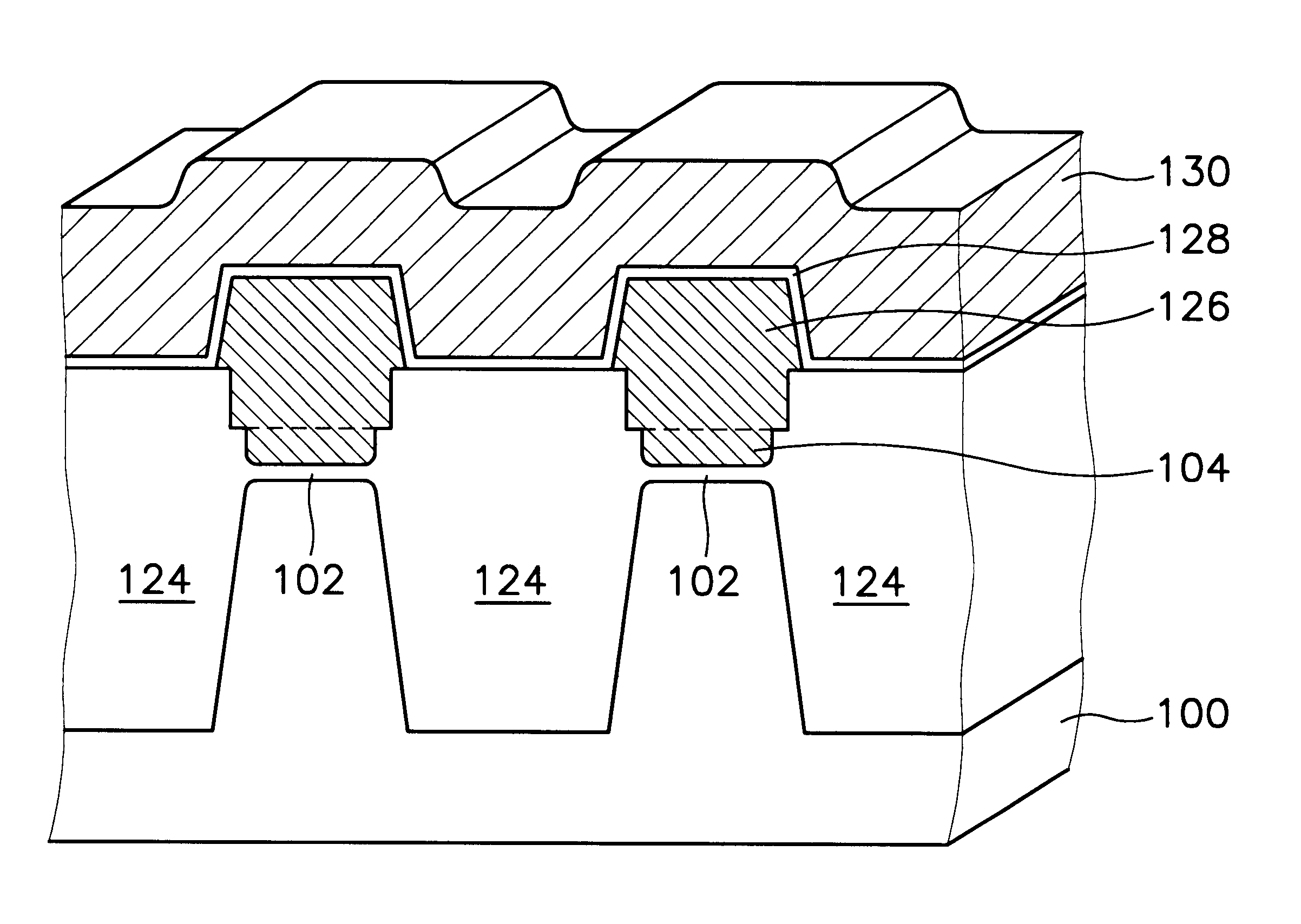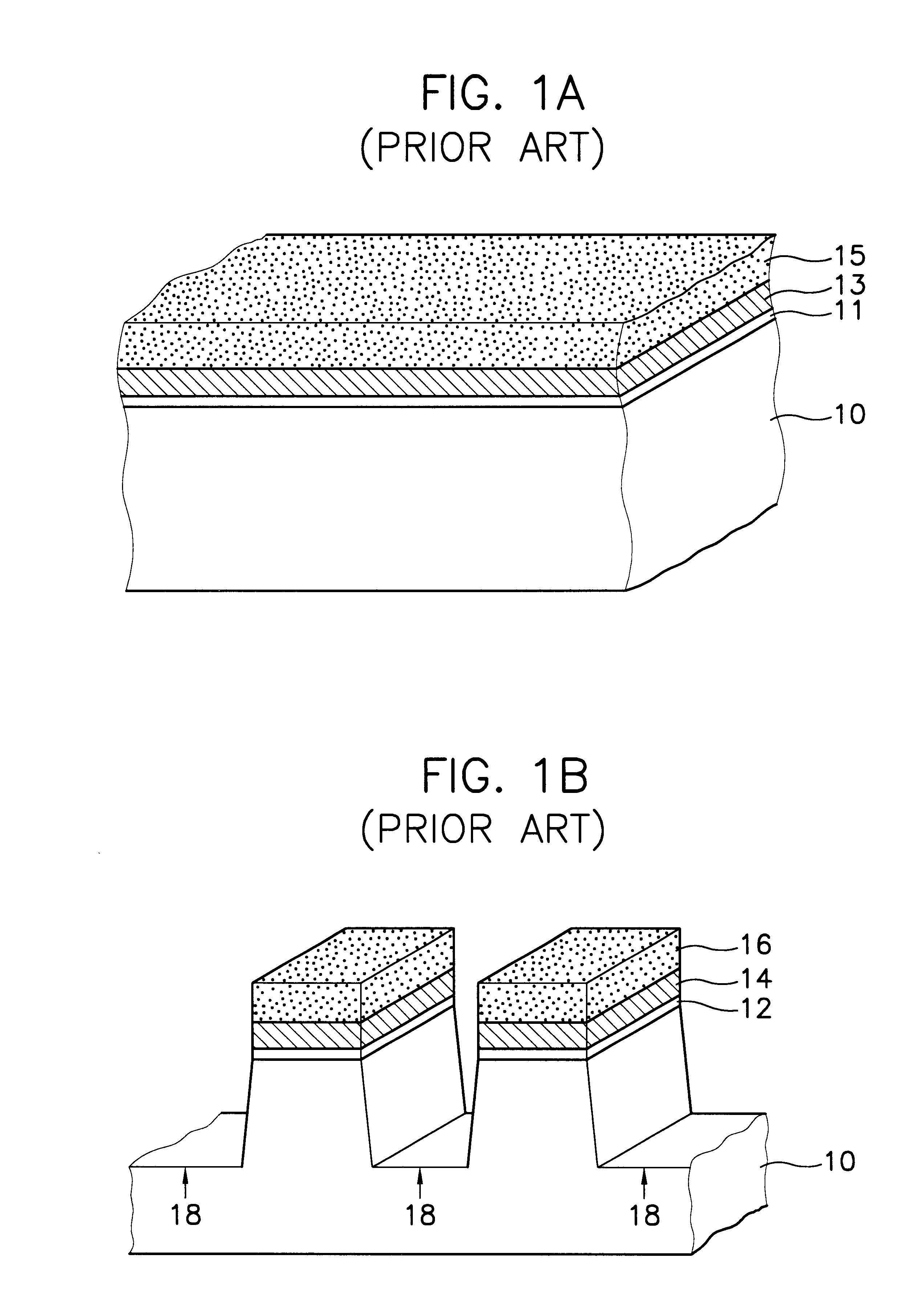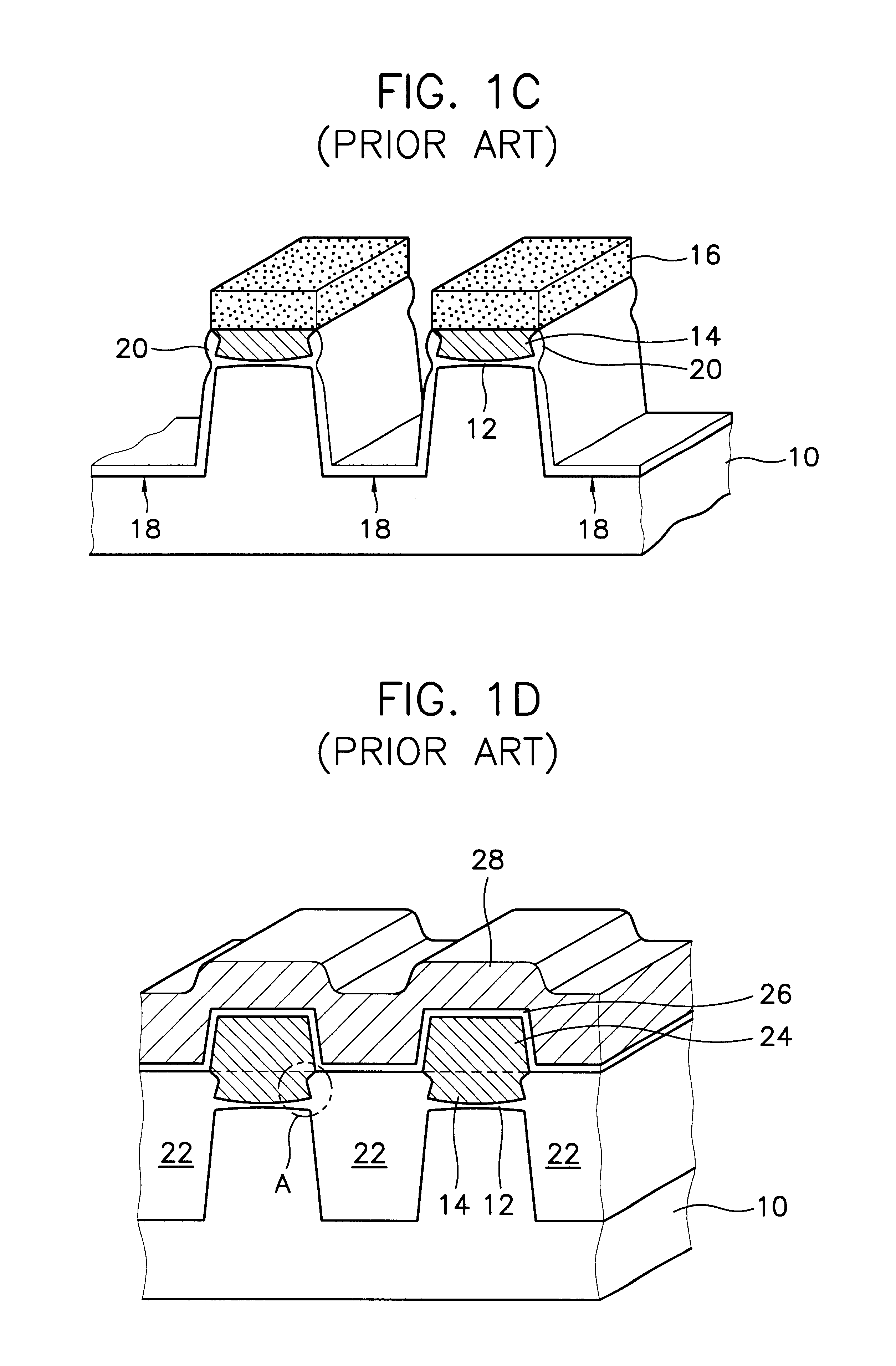Semiconductor device having desired gate profile and method of making the same
a technology of magnetic resonance and gate profile, applied in the field of control gates, can solve the problems of limited scalability, limited alignment tolerance, mechanical techniques, etc., and achieve the effect of reducing the electrical characteristics of the memory device, reducing the scalability, and reducing the scalability
- Summary
- Abstract
- Description
- Claims
- Application Information
AI Technical Summary
Problems solved by technology
Method used
Image
Examples
second embodiment
FIGS. 4A and 4B are sectional views for showing a method for manufacturing a non-volatile memory device according to the present invention.
first embodiment
Referring to FIG. 4A, in the same manner as in the first embodiment, a gate oxide layer 101, a first silicon layer 103, a buffer oxide layer 105, and a stopping layer 107 are sequentially formed on substrate 100.
Referring to FIG. 4B, using a photo mask for defining a floating gate, a photoresist pattern 160 is formed on the stopping layer 107 as in the first embodiment. Then, the stopping layer 107, the buffer oxide layer 105, the first silicon layer 103, and the gate oxide layer 101 are patterned by using the photoresist pattern 160 as an etch mask so that a pattern structure formed by the stopping layer pattern 108, the buffer oxide layer pattern 106, the first silicon layer pattern 104, and the gate oxide layer pattern 102 is formed.
Next, substrate 100 is etched to form a trench 109, and an ashing or a strip process is performed to remove the photoresist pattern 160.
Thereafter, the processes shown in FIGS. 2C to 2I of the first embodiment are performed thereby providing a floatin...
PUM
 Login to View More
Login to View More Abstract
Description
Claims
Application Information
 Login to View More
Login to View More - R&D
- Intellectual Property
- Life Sciences
- Materials
- Tech Scout
- Unparalleled Data Quality
- Higher Quality Content
- 60% Fewer Hallucinations
Browse by: Latest US Patents, China's latest patents, Technical Efficacy Thesaurus, Application Domain, Technology Topic, Popular Technical Reports.
© 2025 PatSnap. All rights reserved.Legal|Privacy policy|Modern Slavery Act Transparency Statement|Sitemap|About US| Contact US: help@patsnap.com



